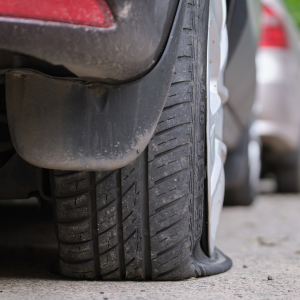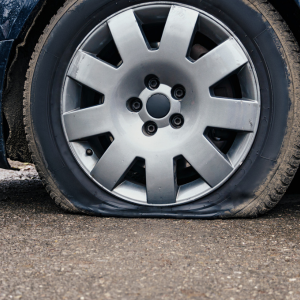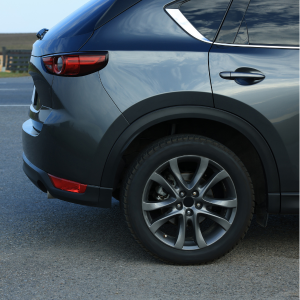As we rely more and more on our vehicles for transportation, it is important to understand the potential risks and consequences that come with owning a car. One of the most common and frustrating issues that can occur is a punctured tire. While this may seem like a simple inconvenience, it can have serious implications, especially if the tire in question is a tubeless tire. With advancements in technology, many modern cars now come equipped with tubeless tires, which offer benefits such as better fuel efficiency and a smoother ride.
However, many drivers are left wondering, what exactly happens if a tubeless tire gets punctured? In this article, we will explore the potential scenarios that can occur when a tubeless tire is punctured, the steps to take when faced with this situation, and the importance of proper maintenance to prevent such occurrences. By gaining a deeper understanding of the consequences of a punctured tubeless tire, drivers can be better equipped to handle the situation and ensure the safety of themselves and others on the road.
Causes, signs and effects of punctures

Punctures in car tubeless tires can be a frustrating and potentially dangerous occurrence for drivers. Understanding the causes, signs, and effects of these punctures is crucial in order to effectively address the issue. One common cause of punctures is sharp objects on the road, such as nails or glass shards, which can penetrate the tire and cause air leakage. Additionally, driving over potholes or rough surfaces can also lead to tire punctures.
Signs of a punctured tire include a sudden loss of pressure, a visible object embedded in the tire, or even a hissing sound as air escapes. The effects of a punctured tire can range from inconvenience and increased fuel consumption to more severe consequences like loss of control or complete tire failure. Therefore, it is essential for drivers to promptly address any signs of a puncture to ensure their safety and prevent further damage to the tire.
Steps to safely remove and repair

When faced with a punctured car tubeless tire, it is crucial to follow the proper steps to safely remove and repair the tire. First, it is important to find a safe location away from traffic to park the vehicle. Engage the parking brake and turn on the hazard lights for added safety. Next, gather the necessary tools such as a jack, lug wrench, and a puncture repair kit. Begin by loosening the lug nuts of the tire using the lug wrench. Once the lug nuts are loose, use the jack to lift the vehicle off the ground, ensuring it is at a stable and secure height.
Completely remove the lug nuts and carefully pull the punctured tire off the wheel hub. Inspect the tire and locate the puncture site. Using the puncture repair kit, follow the manufacturer’s instructions to effectively repair the puncture. It is essential to thoroughly clean and dry the punctured area before applying the repair patch. Once the repair is complete, reinstall the tire onto the wheel hub, hand-tighten the lug nuts, and then lower the vehicle back to the ground using the jack.
Finally, use the lug wrench to securely tighten the lug nuts in a star pattern. It is recommended to have the repaired tire inspected by a professional to ensure its integrity and safety. By following these steps, drivers can effectively address a punctured car tubeless tire and restore safe driving conditions.
Importance of checking tire pressure

Regularly checking the tire pressure of a car is of utmost importance for several reasons. Proper tire pressure not only enhances the overall performance and handling of the vehicle, but it also contributes to maintaining optimum fuel efficiency. When tires are underinflated, they have increased rolling resistance, which puts unnecessary strain on the engine and leads to higher fuel consumption.
Additionally, underinflated tires are more prone to wear and tear, reducing their lifespan and requiring more frequent replacements. On the other hand, overinflated tires can result in a harsher ride, decreased traction, and uneven tread wear. By regularly monitoring and maintaining the correct tire pressure, drivers can ensure a safer and smoother driving experience, prolong the life of their tires, and maximize fuel efficiency.
When to replace a punctured tire
In the unfortunate event that a car’s tubeless tire becomes punctured, it is important to assess the severity of the damage before determining whether the tire needs to be replaced. Minor punctures, such as those caused by nails or small objects, can often be repaired using industry-standard techniques and materials. However, if the puncture is larger than a quarter-inch in diameter, is located on the sidewall, or has caused significant damage to the tire’s structure, it is generally recommended to replace the tire entirely.
This is because these types of punctures may compromise the integrity of the tire, leading to potential safety hazards and decreased performance. It is crucial to consult with a professional tire specialist who can assess the puncture and provide expert advice on whether a replacement is necessary. By promptly addressing punctured tires and making informed decisions, drivers can ensure their safety on the road and maintain optimal tire performance.
Tips for prevention and maintenance
When it comes to preventing punctures and maintaining the longevity of your car’s tubeless tires, there are several important tips to keep in mind. Firstly, regularly checking the tire pressure is crucial. Underinflated or overinflated tires can increase the risk of punctures, so it is important to maintain the manufacturer-recommended pressure levels. Additionally, inspecting the tire tread for wear and tear is essential. Bald or excessively worn tires are more susceptible to punctures and may need to be replaced.
Avoiding rough terrain and sharp objects on the road whenever possible can also help reduce the chances of encountering a puncture. Finally, having a spare tire and the necessary tools for changing a tire is essential for any driver. Being prepared for unexpected punctures can minimize the inconvenience and potential dangers associated with them. By implementing these preventative measures and practicing regular maintenance, drivers can take proactive steps to ensure the longevity and safety of their car’s tubeless tires.
FAQs About What happens if a car tubeless tire get punctured
What are the potential consequences of driving on a punctured tubeless tire?
Driving on a punctured tubeless tire can have several potential consequences. Firstly, it can cause further damage to the tire, potentially leading to a blowout or loss of control while driving. Secondly, it can damage the wheel rim, making it necessary to replace both the tire and the rim. Additionally, driving on a punctured tire can compromise the overall stability and handling of the vehicle, increasing the risk of accidents. The puncture can also cause the tire to lose air pressure, resulting in reduced fuel efficiency and potentially damaging the tire beyond repair. It is important to address a punctured tire promptly to avoid these potential consequences.
How does a tubeless tire handle a puncture compared to a traditional tire with an inner tube?
A tubeless tire handles a puncture differently than a traditional tire with an inner tube. In a tubeless tire, the sealant inside the tire fills in the puncture hole and forms a temporary seal, preventing air from escaping. This allows the tire to continue to function with minimal air loss and without the need for immediate repair. In contrast, a traditional tire with an inner tube will typically deflate rapidly when punctured, as the air escapes through the hole in the tube. This requires the tube to be patched or replaced before the tire can be reinflated and used again.
Can a tubeless tire still be driven on if it gets punctured, or does it need immediate repair or replacement?
A tubeless tire can still be driven on if it gets punctured, but it is important to address the issue as soon as possible. While some punctures may be small and cause minimal air loss, larger punctures can lead to a rapid loss of pressure and impact the tire’s performance and safety. It is recommended to inspect the tire and assess the severity of the puncture. If it is a minor puncture, such as a nail or screw, it may be possible to repair it with a tire plug or patch. However, if the puncture is significant or the tire’s integrity is compromised, immediate repair or replacement is necessary.
Final Words
In summary, it is important for drivers to understand the potential consequences of a punctured tubeless tire. While advancements in technology have made these tires more durable and resistant to punctures, they are not completely immune. It is crucial to regularly check tire pressure and tread depth, and to have a spare tire or repair kit on hand in case of emergencies. By being proactive and prepared, drivers can ensure a safe and smooth journey on the road.

